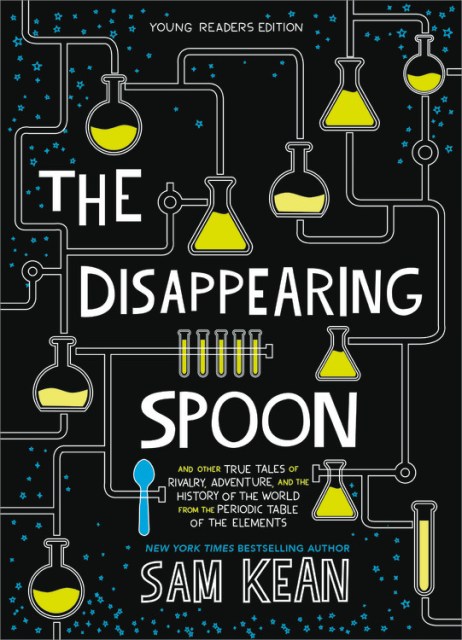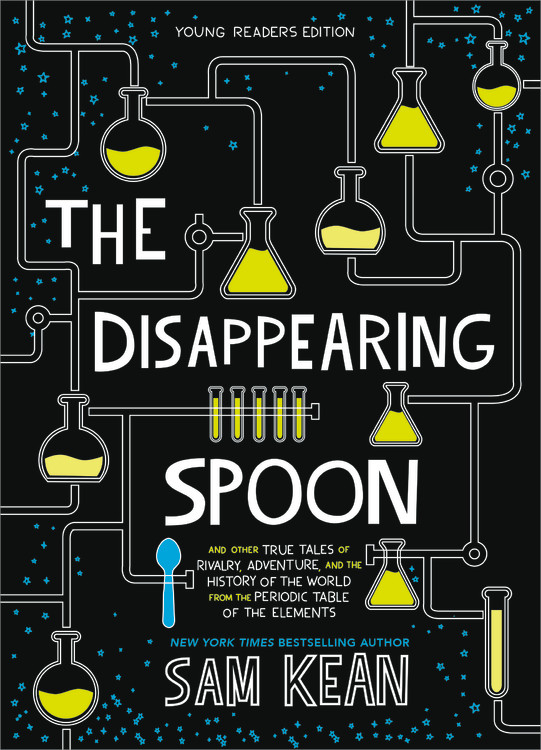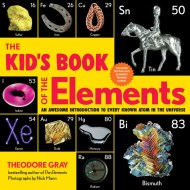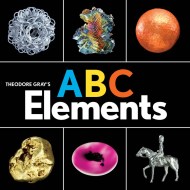Promotion
Use code BEST25 for 25% off storewide. Make sure to order by 11:59am, 12/12 for holiday delivery!
By clicking “Accept,” you agree to the use of cookies and similar technologies on your device as set forth in our Cookie Policy and our Privacy Policy. Please note that certain cookies are essential for this website to function properly and do not require user consent to be deployed.
The Disappearing Spoon
And Other True Tales of Rivalry, Adventure, and the History of the World from the Periodic Table of the Elements (Young Readers Edition)
Contributors
By Sam Kean
Formats and Prices
- On Sale
- Sep 10, 2019
- Page Count
- 240 pages
- Publisher
- Little, Brown Books for Young Readers
- ISBN-13
- 9780316388276
Price
$9.99Price
$12.99 CADFormat
Format:
- Trade Paperback $9.99 $12.99 CAD
- ebook $7.99 $9.99 CAD
- Audiobook Download (Unabridged)
This item is a preorder. Your payment method will be charged immediately, and the product is expected to ship on or around September 10, 2019. This date is subject to change due to shipping delays beyond our control.
Buy from Other Retailers:
Why did Gandhi hate iodine?
How did radium nearly ruin Marie Curie’s reputation?
Why did tellurium lead to the most bizarre gold rush in history?
The periodic table is a crowning scientific achievement, but it’s also a treasure trove of adventure, greed, betrayal, and obsession. A series of fascinating tales in The Disappearing Spoon follow the unassuming elements on the table as they play surprising roles in human history, finance, mythology, conflict, art, medicine—and of course the lives of the (frequently) mad scientists who discovered them!
With line-drawings and side-bars throughout, students, teachers, and burgeoning science buffs will love learning the often unbelievable history behind the chemistry.
Perfect for…
★ Aspiring scientists
★ STEM classrooms
★ Trivia lovers
★ Fans of Bill Nye
-
Praise for the adult edition ofThe Disappearing Spoon:Entertainment Weekly
"Kean...unpacks the periodic table's bag of tricks with such aplomb and fascination that material normally as heavy as lead transmutes into gold." -
"Kean's writing sparks like small shocks...he gives science a whiz-bang verve so that every page becomes one you cannot wait to turn just to see what he's going reveal next."The Boston Globe
-
"[Kean turns] The Disappearing Spoon into a nonstop parade of lively science stories...ebullient."New York Times
-
"Kean's palpable enthusiasm and the thrill of knowledge and invention the book imparts can infect even the most right-brained reader."Miami Herald
-
"With a constant flow of fun facts bubbling to the surface, Kean writes with wit, flair, and authority in a debut that will delight even general readers."Publishers Weekly
-
"Nearly 150 years of wide-ranging science...and Kean makes it all interesting. Entertaining and enlightening."Kirkus Reviews
Newsletter Signup
By clicking ‘Sign Up,’ I acknowledge that I have read and agree to Hachette Book Group’s Privacy Policy and Terms of Use







